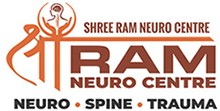Osteoporosis Treatment: Understanding the Options
Introduction
With millions of people worldwide affected by osteoporosis, it is crucial to understand the available treatment options. In this article, Dr. Deepashu, a renowned expert in osteoporosis treatment, will provide an in-depth analysis of various treatment options and shed light on the best practices for managing this condition.
Osteoporosis: A Silent Threat
Osteoporosis is a progressive bone disease characterized by low bone density and deterioration of bone tissue. It often develops silently, without any noticeable symptoms until a fracture occurs. Women, especially postmenopausal women, are more prone to osteoporosis due to hormonal changes. However, men can also be affected, albeit to a lesser extent.
The Importance of Treatment
When left untreated, osteoporosis can lead to severe consequences, including fractures, chronic pain, and loss of independence. Therefore, it is of utmost importance to initiate appropriate treatment strategies to manage this condition effectively.
Diagnosis: The First Step
The journey towards effective osteoporosis treatment starts with an accurate diagnosis. Dr. Deepashu emphasizes the significance of bone mineral density (BMD) testing, which helps identify the presence and severity of osteoporosis. This non-invasive test, often performed using dual-energy x-ray absorptiometry (DEXA), provides valuable insights that guide treatment decisions.
Lifestyle Modifications: Building Stronger Bones
In conjunction with medical interventions, lifestyle modifications play a pivotal role in managing osteoporosis. Dr. Deepashu recommends adopting the following practices to promote stronger bones:
- Regular Exercise: Engaging in weight-bearing exercises, such as walking or dancing, helps stimulate bone growth and increase bone density.
- Balanced Diet: Consuming a nutrient-rich diet, including calcium, vitamin D, and protein, is essential for maintaining optimal bone health.
- Avoidance of Smoking and Excessive Alcohol Consumption: Smoking and excessive alcohol intake can contribute to bone loss, increasing the risk of fractures.
Medications: Preventing Further Damage
In cases where lifestyle modifications alone are insufficient, medications are often prescribed to prevent further bone loss and strengthen existing bone density. Dr. Deepashu shares insights into some commonly prescribed osteoporosis medications:
- Bisphosphonates: These drugs help slow down bone loss and reduce the risk of fractures by inhibiting bone breakdown.
- Selective Estrogen Receptor Modulators (SERMs): In postmenopausal women, SERMs can help maintain bone density by mimicking the effects of estrogen without the associated risks.
- Hormone Replacement Therapy (HRT): As hormonal changes significantly impact bone health, HRT may be recommended to restore hormone levels and reduce bone loss.
Surgical Interventions: Addressing Severe Cases
For individuals with severe osteoporosis or those who have experienced debilitating fractures, surgical interventions may be necessary. Dr. Deepashu highlights two common surgical procedures used in such cases:
- Vertebroplasty: This minimally invasive procedure involves injecting a special cement-like substance into fractured vertebrae, providing stability and pain relief.
- Kyphoplasty: Similar to vertebroplasty, kyphoplasty aims to stabilize and alleviate pain in fractured vertebrae. However, in this procedure, a balloon is first inserted to create space before injecting the cement-like material.
Ongoing Progress: Research and Development
Dr. Deepashu acknowledges the continuous advancements in the field of osteoporosis treatment. Researchers are exploring new therapeutic approaches, such as monoclonal antibodies targeting bone cells, to further enhance treatment outcomes. It is an exciting time for both patients and the medical community, as innovative solutions are on the horizon.
In conclusion, osteoporosis treatment encompasses various approaches tailored to an individual’s specific needs and risk factors. Early diagnosis, lifestyle modifications, medications, and surgical interventions when necessary, can effectively manage osteoporosis and prevent further complications. By staying proactive, individuals can maintain strong bones and lead fulfilling lives, free from the limitations imposed by osteoporosis.


